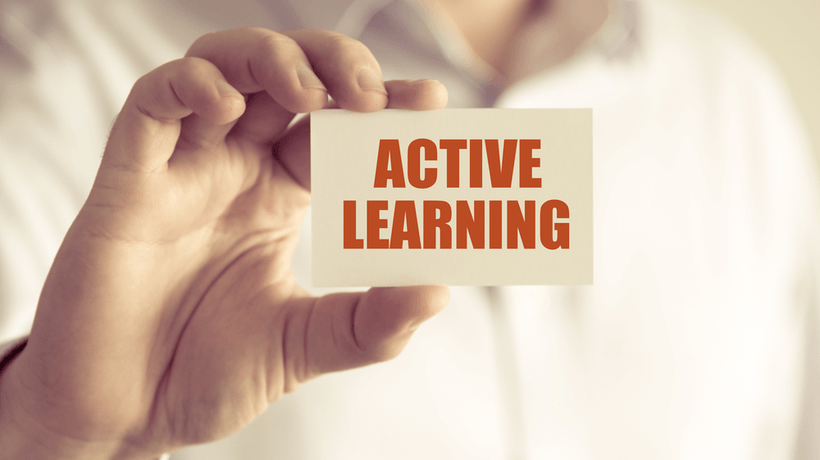Analyzing The Success Of "Learning How To Learn" MOOC
MOOCs (Massive Open Online Courses) seem to be having a bad time in the press theses days. Seen as the answer to scaling up education to some and evil incarnate to others, the court of popular opinion is leaning negative on their potential. I’ve completed a number of MOOCs, and while I certainly learned a lot from them, they were not exemplary educational experiences. In the best cases, they were simply a collection of convenient (and free) lectures with associated quizzes and Powerpoint slides.
Media theorist Marshall McLuhan observed that emerging media forms tend to replicate the style of the media that had come before it [1], so naturally the most popular use of video in education is recording the classroom lecture just as early motion pictures were filmed theatrical plays.
The economic allure for recording lectures is one of economy of scale; one could produce a lesson at a fixed cost and present that experience over and over again, presumably at a lower incremental cost each time, as compared with a live instructor who must constantly deliver the lecture at the same cost per performance. Today's MOOCs tug at the same economic and productivity fantasies: record the lectures of exemplary professors from elite universities once, and deliver them many times to a grateful worldwide audience, with thousands of students.
But it doesn’t need to be this way. The potential of a MOOC is to provide a well-crafted learning experience that embraces the new medium rather than simply rendering an old medium (the lecture) in the new medium’s clothing (digital technology).
Barbara Oakley’s MOOC Learning How to Learn [2] is the exception to this trend. It is well-produced, informative, and fully embraces the new medium. With over 2 million registered students and completion rates of over 20% [3], (the average MOOC completion rate is 5%), Learning How to Learn is clearly resonating with its audience.
The question is why is it so popular? Intrigued, I enrolled the short MOOC to understand why it was so popular, and what lessons is might have for other MOOC authors to make their offerings more effective their “filmed plays”.
Scripted, Well Written, And Rehearsed Content
The Learning How To Learn MOOC is based on her book A Mind for Numbers [4], which is an excellent self-help book for students based on the latest cognitive and neuroscience on learning and provides an accessible way for students to understand and employ better learning skills. I wished I had read it when I was a student.
The MOOC is a straight adaptation of the book and lends itself well to the task, but she has added elements that enhance the basic content, such as animations, reinforcing graphical elements, active and thoughtful quizzes that do not focus only on retention-level repetition, and a wide variety of optional material (links, other interviews, etc.). Dr. Oakley is clearly a good instructor and put in the time to completely script the entire MOOC, remarking in an interview that making this MOOC was much harder than writing the book.
High Production Values
Commercial television is a hard act to follow. We live immersed in a media-rich environment, where the average cost to produce a 30-second television commercial was $354,000 in 2011 [5], with many costing millions of dollars to create, and even more to air. Whatever opinions one might have about the ultimate value of commercial television programs, typically they are finely crafted productions created by professionals possessed with great communicative skills-- and the money to accomplish them.
Oakley has clearly bucked the overall MOOC trend and has made good use of the inexpensive technologies with well-lit scenes that are clearly edited and make use of the green screen overlay technologies found in her Adobe Premiere video editor. She used a large teleprompter to ensure a fluid delivery of her message and high-quality audio [5].
The editing was lively and made use of cut-away shots to break away from the main “talking head” view, which was often overlaid atop graphics. She used a consistent series of visual cues that appeared on the screen in appropriate places (i.e. a picture of a hook when talking about the cognitive versions of them) that tied into her narrative and visually support the verbal message. While some of the graphics used were cheesy looking, clearly the use of bad-clip art (in particular the zombies), their use is effective in reinforcing the concepts without being cognitively distracting, such as reading a list of words might be,
Learning How To Learn makes liberal use of the visual metaphors from Oakley’s book and she created very simple, but effective animations to show process. For example, to show the relationship of chunked concepts and how they fit into long-term memory, she used simple images of a pin-ball machine and grouped the pins along to the narration.
The Bottom Line
Most of the MOOCs I’ve seen have abysmal production values and have little more preparation than a lecture with slides.This is fine if your audience consists mainly of college educated auto-didacts (which typifies many MOOC learners) but won’t attract a wider audience.If it’s all about scale, then the material presented must exceed the performance of a live lecture. “Filmed plays” will not be effective and do not embrace the new affordances that the digital medium bring to the table.
The advancements in digital technology have theoretically made a flat playing field for all budget levels. Inexpensive cameras with HD quality and laptop-based editing and effects software can create programs that are qualitatively indistinguishable from expensive studio-produced content. Missing from this calculus, however, is the human factor. A virtual army of highly skilled writers, artisans and professionals exist to serve the entertainment, and to a lesser extent, the educational genres, but the falloff is sharp with instructional media. Instructional programs typically make use of local talent, hastily-written scripts, and overall lower production values, and they often fail to live up to our quality expectations set by the entertainment genre.
More importantly, an effective MMOC needs to go beyond the lecture and take advantage the dynamic capabilities of the modern web-based environment. At UVA, we’ve been experimenting with ways to push the boundaries of using video for education with Qmedia but the potential for combining video with dynamic digital web-based techniques is wide open.
Learning How To Learn is effective because Oakley put a significant amount of effort making it effective. Good content, coupled with high production values, and sound pedagogy take time to produce and clearly pays off in the final product.
Footnotes:
- McLuhan, M. (1964). Understanding Media: The Extensions of Man. New York: McGraw Hill.
- Oakley, B, & Sejnowski, T. (2017). Learning How to Learn. UCSD/Coursera.
- Edsurge interview with Barbara Oakley: What if MOOCs Revolutionize Education After All?
- Oakley, B. (2014). A mind for numbers: How to excel at math and science (even if you flunked algebra). Tarcher.
- The “secret sauce” behind the world’s most popular online course









